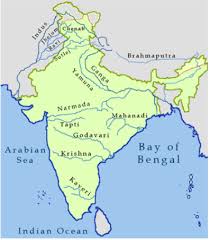The Godavari River is often referred to as the Ganga of the South. It holds a significant place in the cultural, historical, and geographical landscape of India. This article delves into the captivating journey of the Godavari River, its importance, and the diverse features that make it a cherished lifeline for millions of people.

- Historical and Cultural Significance: The Godavari River has deep historical and cultural roots. It is mentioned in ancient Hindu scriptures like the Ramayana and the Mahabharata, making it a revered river in Indian mythology. Numerous religious sites and pilgrim centers dot its banks, attracting devotees from all over the country. The river has witnessed the rise and fall of various dynasties and has been an important trade route since ancient times.
- Origin: The Godavari River originates in the state of Maharashtra, India. It has its source in the Brahmagiri Hills of the Western Ghats near Trimbak in the Nashik district of Maharashtra. The specific location of the origin is near the village of Trimbakeshwar, which is known for the ancient Trimbakeshwar Temple dedicated to Lord Shiva. From this point, the river begins its journey and flows eastwards through various states before eventually emptying into the Bay of Bengal in Andhra Pradesh.
- Geographical Spread: The River originates from the slopes of the Western Ghats in Maharashtra and flows through six Indian states: Maharashtra, Telangana, Andhra Pradesh, Chhattisgarh, and Odisha. With a length of around 1,465 kilometers, it is the second-longest river in India, after the Ganges. Its vast basin covers an extensive area, providing water to numerous towns, villages, and agricultural lands.
- Irrigation and Agriculture: It plays a crucial role in irrigation and agriculture, providing water to vast agricultural lands in its basin. Its waters are harnessed through dams, reservoirs, and canals, facilitating irrigation for paddy fields, fruit orchards, and cash crops. The river’s water resources contribute significantly to food security and agricultural productivity in the region.
- Economic Importance and Development: Its basin serves as an economic hub, supporting various industries, including agriculture, fisheries, hydropower generation, and tourism. The river’s water is utilized for irrigation, drinking water supply, and industrial purposes, driving economic development in the surrounding regions. It also hosts popular cultural and religious festivals that attract tourists, contributing to the local economy.
Tributaries of Godavari River

- Pranhita River: The Pranhita River is the largest tributary of the River. It originates in the state of Maharashtra and merges with the Godavari in Telangana. The confluence of the Pranhita and Godavari rivers is known as Pranhita River.
- Indravati River: The Indravati River is a major tributary of the Godavari. It originates in the state of Chhattisgarh and flows through Odisha before joining the Godavari in Telangana. The Indravati River is known for its scenic beauty and wildlife.
- Manjira River: The Manjira River, also known as the Manjeera River, originates in Maharashtra and flows through Telangana before joining the Godavari River. The Manjira River plays a crucial role in irrigation and supports agricultural activities in the region.
- Pravara River: The Pravara River is a tributary of the Godavari that originates in the Western Ghats of Maharashtra. It flows through the Ahmednagar district before merging with the Godavari River. The Pravara River is known for its religious significance and is associated with various temples and pilgrimage sites.
- Sabari River: The Sabari River originates in the state of Odisha and flows through the states of Chhattisgarh and Telangana before joining the Godavari River in Andhra Pradesh. The Sabari River is revered for its association with the Sabarimala temple, a famous pilgrimage site in Kerala.
- Wainganga River: The Wainganga River originates in the Satpura Range of Madhya Pradesh and flows through Maharashtra before merging with the Godavari River. The Wainganga River is known for its scenic beauty and is associated with the wildlife-rich Tadoba Andhari Tiger Reserve.
Conclusion: The Godavari River, with its mesmerizing flow, cultural significance, and ecological importance, holds a special place in the hearts of millions of people. It serves as a lifeline for agriculture, sustains biodiversity, and offers spiritual solace. Understanding the multifaceted aspects of the Godavari River enables us to appreciate its beauty, value, and the need for its conservation for future generations to cherish.
Important Links